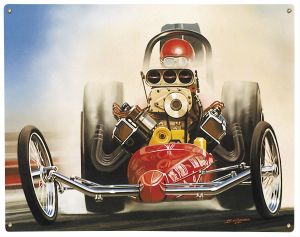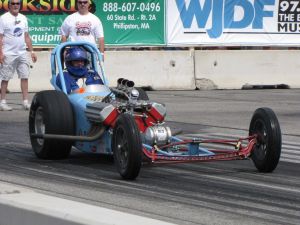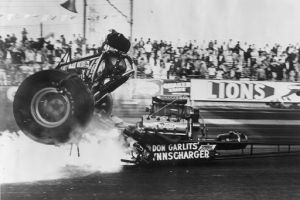Difference between revisions of "Slingshot"
| (4 intermediate revisions by the same user not shown) | |||
| Line 1: | Line 1: | ||
{{Template:Openx}} | {{Template:Openx}} | ||
{{Template:Underconstruction}} | {{Template:Underconstruction}} | ||
| + | |||
| + | <!-- The below are the photos that line up on the right side. Use the Upload link to upload photos of this car model and replace the FilenameUploaded/description in the below --> | ||
| + | [[Image:Slingshot1.jpeg|thumb|300px|Big Daddy [[Don Garlits]] frying the hides in one of the Swamp Rats]] | ||
| + | [[Image:Slingshot2.jpeg|thumb|300px|Period correct 60s Digger with Generation 1 Hemi]] | ||
| + | [[Image:Slingshot3.jpeg|thumb|300px|Period Correct early 70s Slingshot]] | ||
| + | [[Image:Slingshot4.jpeg|thumb|300px|The accident in Swamp Rat 13 where Big Daddy l8st part of his foot]] | ||
== Intro == | == Intro == | ||
Latest revision as of 01:20, 31 March 2020
This Wiki is Under Construction, and can use your help!
Please take a moment to add any information you might have on this topic. It is through this type of Member collaboration that the MoparWiki will grow into being the Ultimate Mopar Infobase. The links contained in the Understanding Wikis box in the sidebar can help you get started.

Contents
Intro
The front engine dragster is a type of racing car purpose built for drag racing. Commonly known as a "rail", "digger", or "slingshot", it is now considered obsolete, and is used only in nostalgia drag racing. Wheelbases ranged from 97 to 225 inches.
History
The front engine dragster came about due to engines initially being located in the car's frame in front of the driver. They did not use (and current dragsters still do not use) any form of suspension. Because of this, these types of vehicles were prone to becoming unstable at speed. This is due to their making 2,000–3,000 hp, plus having poor tire technology, short wheelbases, and very lightweight. (This was demonstrated to extremes in Fuel Altereds.) The driver sits angled backward, over the top of the differential in a cockpit situated between the two rear tires, a design originating with Mickey Thompson in 1954, as a way of improving traction. This position led to many drivers being maimed when catastrophic clutch failures occurred.
Introduced with the start of organized drag racing, they were limited by the availability of traction from their rear tires or "slicks". A number of dragsters with four rear drive wheels were attempted as well, including cars by Art Chrisman (along with his brother, Lloyd, and partner Frank Cannon), Bill Coburn, and Eddie Hill. (Coburn and the Chrisman brothers used twin engines, also.)
Push starts were necessary until National Hot Rod Association (NHRA) mandated self-starters in 1976. After burnouts, cars would be pushed back by crews; this persisted until NHRA required reverse gears in 1980.
The slingshot produced a number of fatal wrecks in the 1960s, including Mike Sorokin's and John Mulligan's (months after suffering severe burns in a fire at the Nationals in 1969). Clutches, bell housings, blowers, and engines exploded, with ETs hitting 6.43 seconds by the end of 1969, a pass recorded by Mulligan to qualify #1 at The Nationals. Other accidents included a flip (what today would be called "blowover") by Jim Nicoll at the 1970 Nationals after a clutch failure.
The slingshot's advantages, putting weight over the rear tires, now served to cause the front end to lift, as tire technology improved, to the point ballast, sometimes hundreds of pounds' worth, had to be added over the front axle, while others, like Ronnie Scrima (on his Scrimaliner) and Tony Nancy, would mount a winglet.
The drawbacks led to several attempts at rear-engined cars, but the rail was only supplanted by the rear-engined type (which is now standard) when Don Garlits introduced Swamp Rat XIV in 1971. He designed the car while in hospital, having suffered from severe injuries caused by an exploding clutch.
References
Related Links
Random Page | Longest Wikis | Oldest Wikis | Newest Images | Newest Wikis | List of Categories | List of Every Freakin Wiki
- Register to Edit
- It takes less than 5 minutes to request registration for editing, and we try to approve within 24 hours. Click the Register Link in the Top Bar.
- MoparWiki Help
- While editing Wikis may at first glance appear a little overwhelming, it really isn't. You will find this site's HELP (link found in the sidebar) to be very strong and easy to understand. The best way to start is with small edits and working on your user page -- and you will become a Pro in no time.



